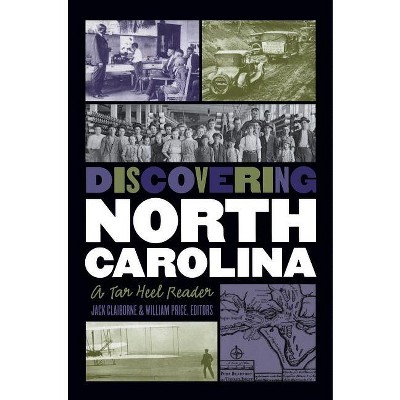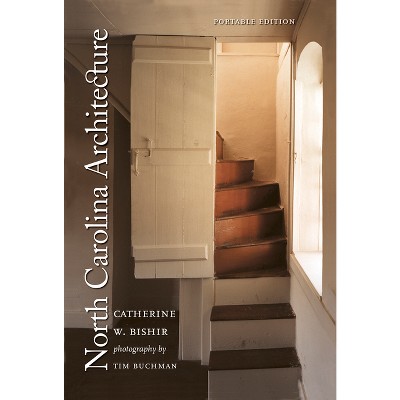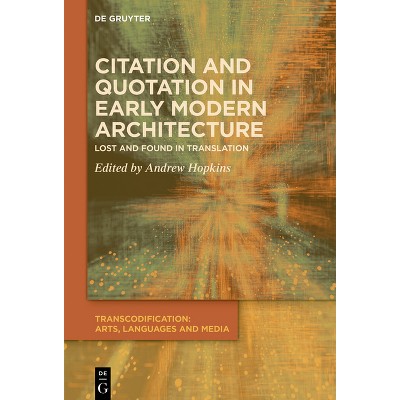Sponsored

Guide to the Historic Architecture of Eastern North Carolina - (Richard Hampton Jenrette Architecture and the Decorative Arts) (Paperback)
In Stock
Sponsored
About this item
Highlights
- Eastern North Carolina boasts some of the oldest and most distinctive architecture in the state, from colonial churches and antebellum plantation houses to the imperiled lighthouses of the late nineteenth century.
- About the Author: Catherine W. Bishir, architectural survey coordinator for the North Carolina Division of Archives and History, is author of the award-winning North Carolina Architecture.
- 504 Pages
- Architecture, History
- Series Name: Richard Hampton Jenrette Architecture and the Decorative Arts
Description
About the Book
Guide to the Historic Architecture of Eastern North CarolinaBook Synopsis
Eastern North Carolina boasts some of the oldest and most distinctive architecture in the state, from colonial churches and antebellum plantation houses to the imperiled lighthouses of the late nineteenth century. The more recent history of this predominantly agricultural region includes landscapes of small farmsteads, country churches, factories, tobacco barns, quiet maritime villages, and market towns. In their guide to this rich and diverse architectural heritage, Catherine Bishir and Michael Southern introduce readers to more than 1,700 buildings in forty-one counties from the coast to Interstate 95. Written for travelers and residents alike, the book emphasizes buildings visible from the road and indicates which sites are open to the public.
Featuring more than 400 photographs and 30 maps, the guide is organized by counties, which are grouped geographically. Sections typically begin with the county seat and work outward with concise entries that treat notable buildings, neighborhoods, and communities. The text highlights key architectural features and trends and relates buildings to the local and regional histories they represent.
A project of the North Carolina State Historic Preservation Office of the Division of Archives and History, the book reflects more than twenty-five years of fieldwork and research in the agency's statewide architectural survey and National Register of Historic Places programs. Two future volumes will cover western and piedmont North Carolina.
Review Quotes
"A diverse and extensive guide for explorers with a historical bent. . . . An excellent guidebook. . . . No trip to the beach should be a straight drive when the Coastal Plain's back roads offer fascinating stories of North Carolina's history through the details of its architecture." -- Coastwatch
"Anyone who loves North Carolina history or architecture will adore this superbly written and illustrated guide. This is truly a book to treasure." -- Southern Pines Pilot
"Not just the Cupola House and Tryon Palace, but tobacco barns, shotgun houses, textile factories, and railroad stations, too. A feast of North Carolina's historic structures that will stand as a definitive source for many years." -- Roy Parker Jr., contributing editor, Fayetteville Observer-Times
"The three-volume guide to the historic architecture of North Carolina may top the list of guide books. These three books provide what is surely the most comprehensive, historically and culturally informative, and easy-to-use set of guides to any state in the nation." -- ARRIS
"This guide, with its maps and detailed place descriptions, would be an invaluable aid to heritage tourists." -- Wilson Daily Times
"This is the perfect gift, for it is not armchair scholarship and no one who takes the time to buy and use this book will be untouched. The book transcends the architectural report, combining architectural details, reasons for significance, and ripping vignettes of common and uncommon places into a succinct prose history." -- North Carolina Historical Review
About the Author
Catherine W. Bishir, architectural survey coordinator for the North Carolina Division of Archives and History, is author of the award-winning North Carolina Architecture. Michael T. Southern is research historian with the North Carolina Division of Archives and History.











